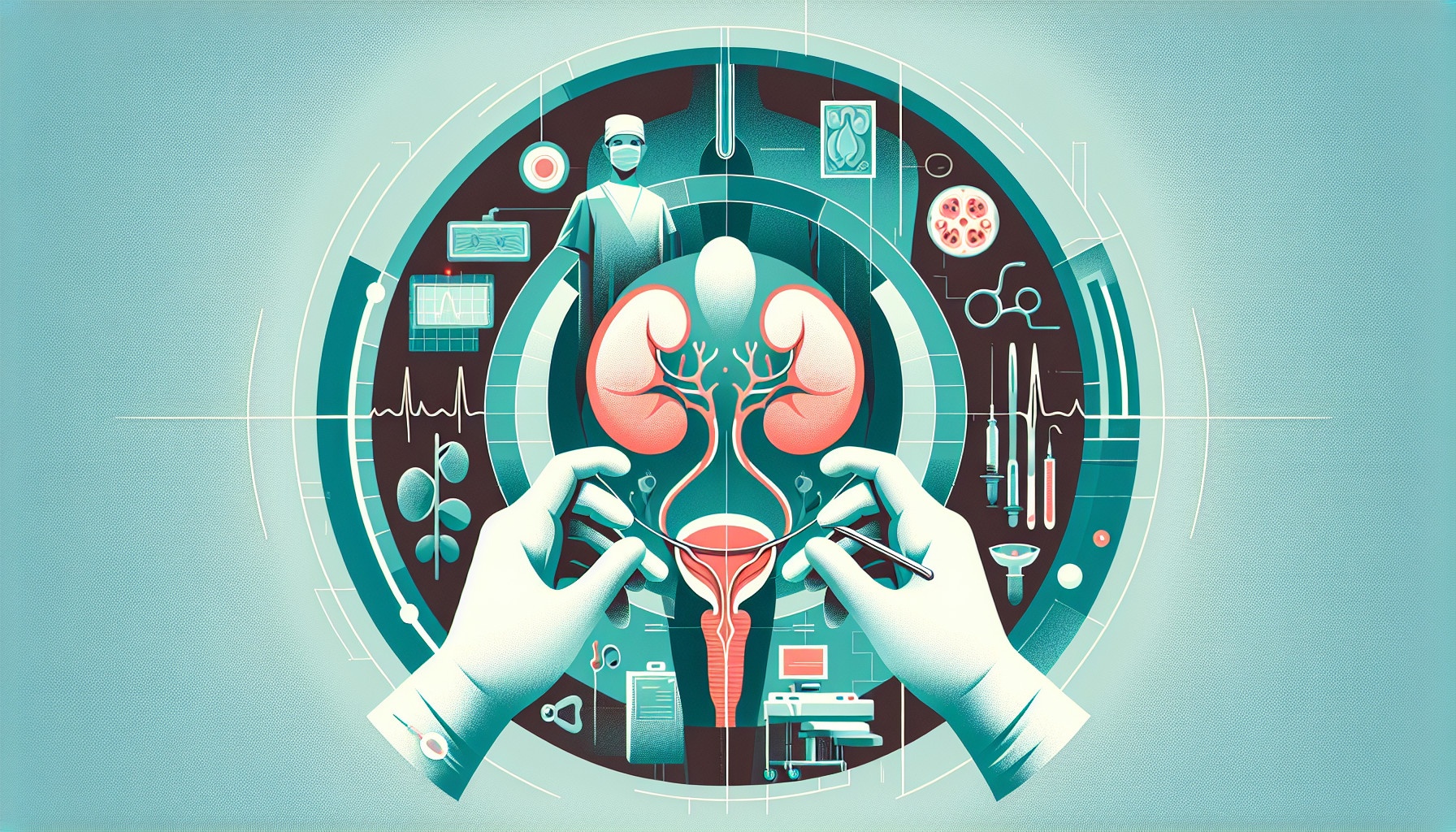Our Summary
This study evaluated the effectiveness of using a robot to assist in surgery for removing bladder diverticula (small pouches that can form in the bladder wall). The research was conducted at a urology department using the DaVinci robotic system between October 2018 and March 2020.
The study looked at several factors including blood loss after surgery, the length of the operation, complications, how long patients stayed in the hospital, how much urine was left in the bladder after urinating (residual urine), leakage at the surgical site, and patients’ satisfaction after surgery.
The study included 11 male patients with an average age of 64.8 years. The surgery took an average of 212 minutes and the average hospital stay was 7.6 days. After surgery, the average amount of residual urine was significantly reduced from 183 ml (before surgery) to 25 ml. No patients had leakage at the surgical site and there were no measurable complications. Patients also reported being satisfied with their urination after the surgery.
The researchers concluded that using a robot to assist in surgery to remove bladder diverticula is effective and gentle. They also noted that other operations, such as bladder neck plastic surgery, prostate adenoma enucleation (removal), bladder stone treatment, and hernia surgery can be done at the same time. However, one downside is that this type of surgery is not adequately represented within the German medical payment system (Diagnosis Related Groups), which could make it more expensive.
FAQs
- What were the results of using a robot to assist in surgery for removing bladder diverticula?
- What is the average hospital stay and surgery time for patients who underwent this robotic-assisted surgery?
- Does using a robot to assist in surgery for removing bladder diverticula have any downsides?
Doctor’s Tip
A helpful tip a doctor might tell a patient about bladder surgery is to follow post-operative care instructions carefully, including taking prescribed medications, avoiding strenuous activities, and attending follow-up appointments. It’s also important to drink plenty of water to keep the bladder healthy and prevent complications. Additionally, maintaining a healthy diet and lifestyle can help promote healing and prevent future bladder issues.
Suitable For
Patients who are typically recommended bladder surgery include those with bladder diverticula, bladder neck issues, prostate adenoma, bladder stones, and hernias. These conditions can cause urinary problems and discomfort, and surgery may be necessary to improve the patient’s quality of life. It is important to consult with a urologist to determine the best course of treatment for each individual case.
Timeline
Before bladder surgery, a patient typically undergoes a series of tests such as imaging scans and blood tests to assess their overall health and the condition of their bladder. They may also be required to stop taking certain medications or adjust their diet in preparation for surgery.
During the surgery, the patient is put under anesthesia and the surgeon makes small incisions in the abdomen to access the bladder. The surgeon then uses the robot to assist in removing the bladder diverticula or perform any other necessary procedures.
After surgery, the patient is closely monitored in the hospital for any complications and to ensure proper healing. They may experience some pain and discomfort, but this can be managed with medication. The patient is usually discharged from the hospital within a week and will need to follow up with their surgeon for follow-up appointments.
In the weeks following surgery, the patient may experience some urinary symptoms such as frequency, urgency, or difficulty urinating. These symptoms typically improve over time as the bladder heals. The patient may also be advised to avoid strenuous activities or heavy lifting for a certain period of time to prevent complications.
Overall, bladder surgery with the assistance of a robot can be effective in treating bladder diverticula and other conditions, with minimal complications and positive outcomes for patients.
What to Ask Your Doctor
What are the potential risks and complications associated with bladder surgery using a robot?
How long is the recovery period after bladder surgery with a robot?
What is the success rate of this type of surgery for removing bladder diverticula?
Are there alternative treatment options for bladder diverticula that do not involve surgery?
Will I need to have any additional follow-up appointments or tests after the surgery?
How experienced are you in performing bladder surgery with a robot?
What type of anesthesia will be used during the surgery?
How will my bladder function be affected after the surgery?
What can I expect in terms of pain management during the recovery process?
Are there any lifestyle changes or restrictions I will need to follow after bladder surgery with a robot?
Reference
Authors: Kajaia D, Hager B, Kliebisch S, Weingärtner K, Seggewiss-Bernhardt R, Zugor V. Journal: Aktuelle Urol. 2022 Jun;53(3):254-261. doi: 10.1055/a-1327-5509. Epub 2021 May 11. PMID: 33975364
